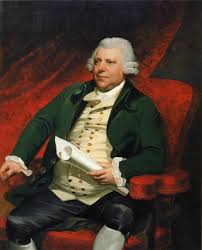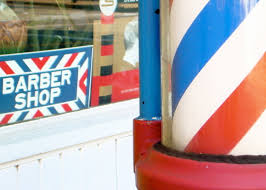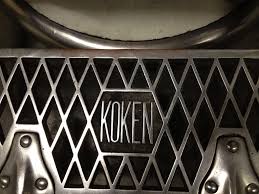Table of Contents
Before we delve further into famous barbers in history, let’s start by defining the job scope of a barber.
So, what do barbers do? Barbers mainly cater to men and help them out with their grooming needs, but they may also have female customers that have short hair and prefer the expertise of a barber.
As a barber, they help customers get the hairstyle that they want, be it a classic cut, spiky, undercut, crewcut, or even if they want specific designs carved onto their scalp. Want your hair colored? Barbers will also help in getting that done for you.
Other than cutting hair and getting it colored, barbers can also help with facial hair such as shaving beards and trimming mustaches. A barber needs to have the right amount of expertise and know how to properly use their tools to achieve the look and style that customers want.
Even without the solid definition above, you probably already had an idea of what a barber does. Did you know, however, that it didn’t always start that way?
Barbers weren’t always just involved with hair. In fact, the role of a barber has significantly evolved throughout history. Before we dive into some of the barbers that played a prominent role in barber history, it’s essential to find out a little bit more about how barbers even came about.
The Very Beginning…
The barber trade has an extremely long history, and the first razor was found among relics of the Bronze Age in Egypt – almost 6,000 years ago.
At that time, barber services were performed by Egyptian nobility – priests and men of medicine, and they used instruments made from sharpened flint or oyster shells.
The art of barbering also played a pivotal role all around the world. Most Aztec, Viking, and Mongolian civilizations utilized shaving as a way to distinguish individual roles in society and war.
Barbering was also introduced to ancient Greece in 296 BC, and a young man’s first shave was even considered as part of a coming of age ceremony.
Starting from the Middle Ages, barbers were also both surgeons and dentists.
They formed their first organization in France in 1096 and only separated into two classes during the 14th century in England – those who practiced surgery and those who practiced barbering.
To distinguish between the two, a bill was also passed in 1745 to separate barbers from surgeons.
Now that we have a better idea of the history of the barber trade, let’s take a look at some of the famous barbers in history and what they’ve achieved.
FAMOUS BARBERS IN HISTORY
Established a Barber School: A.B. Moler
In 1893, A.B. Moler founded the first barber school in Chicago, Illinois. This was quite the milestone as it was the first institution of its’ kind in the world.
He even wrote the first textbook for the school on the subject of barbering which was called The Moler Manual of Barbering. After the first book, he went on to write countless other publications throughout the years.
The school was extremely successful, and branches were soon rapidly opened in nearly every principal city in the United States. A.B. Moler opened the first franchise of Moler Barber College in St. Louis Missouri and the second franchise was opened in Des Moines, Iowa in 1899.
While barber schools initially only focused on shaving, hair-cutting, facial treatments, etc., effort was made to professionalize the work from the 1920s.
Thanks to A.B. Moler, there are now countless barber schools all around the world and barbers are seen as professional individuals that have dedicated years of hard work and training to be adept at their trade.
It’s no wonder that in 1965, A.B. Moler was elected to the Barber Hall of Fame.
Inventor of Waterproof Color Dye for Wigs: Richard Arkwright
Richard Arkwright was born in Preston, Lancashire and was one of 13 children. He started as an apprentice barber and later proceeded even to have his own wig-making business. While he invented a number of things, one of his first inventions was a waterproof color dye for wigs.
Through his travels and having to purchase human hair for use in the manufacturing of wigs, he discovered a secret method for dyeing hair.
Richard Arkwright was quite the individual, when the fashion for wearing wigs started to decline, he continued to communicate with weavers and spinners and directed his attention to mechanical inventions in the field of textiles.
He was an individual that started out from humble beginnings and proceeded to play a huge role in England’s Industrial Revolution.
Inventor of the Roffler Sculptur-Kut Technique: Edmond O. Roffler
In 1927, Edmond Roffler started to learn how to cut hair and completed his barber education in 1928. Eventually, he opened his own shop in 1946 that grew to be quite popular.
In 1958, he traveled to Paris France and studied European methods of haircutting which also included using a sculpture razor on damp hair. When he returned in 1959, he perfected the technique and incorporated his own flair.
He was even awarded a patent for this – a first in the barbering industry.
When he went on to demonstrate this technique in the early 1960s, it became a success and barbers scrambled to seek training from him.
He then formulated the Roffler Sculpture-Kut National Franchise System which is still in place today. With the invention of this technique, barbers could earn revenue and capitalize on long hair.
Although, it started with only 20 barbers being trained in this method, it now has over 6,000 barbers that are trained in this method which is still practiced today.
Unsurprisingly, Edmond Roffler was eventually inducted into the Barber Hall of Fame in 1975.
Fighter of Barber Rights: Louis Mcllvain
Louis Mcllvain started out with another profession. However, when he suffered a severe injury, he went back to Indiana and became an apprentice barber.
Eventually, he returned to Chicago and opened his own shop as a journeyman barber. During that period, barbers were grossly underpaid, and there were no regulations in place for sanitation.
In 1906, Louis became active in the Chicago Barbers’ Protective Association and established a minimum charge for a haircut and a shave. He also reduced working hours and launched a movement to improve sanitation in shops.
After a long, arduous strike in 1919, the contract became a model for barbers’ union and shops across the country.
Louis went on to publish a publication called the Master for Barber Magazine which became a national publication that helped with the establishment of the Associated Master Barbers of America.
As a fighter of barber rights and for all that he’s contributed, in 1968, he was inducted into the Barber Hall of Fame.
Inventor of the Reclining Barber Chair: Ernest Koken
Although originally from Germany, Ernest Koken and his family moved back to the United States and settled in St. Louis, Missouri. There, he hand-decorated and sold shaving mugs to barber shops.
Since he was close to the barbering business, Ernest discovered other products that he could sell to the market – starting with barber chairs.
Eventually, he invented a hydraulically-operated chair that was fitted with a joystick style lever to allow barbers to control all of the chair’s movements easily.
Ernest eventually patented this innovation and called it the Koken Hydraulic Barber Chair which became a success across the United States and beyond.
Still to this day, Koken remains an influential and respected name in the barbering world. Legacy chairs are still produced bearing the Koken name with antique chairs being considered a prized possession.
It’s no surprise that in 1975, he was inducted into the Barber Hall of Fame.
Conclusion
The art of barbering has evolved throughout the years. From the tools to the equipment, to what barbering was, there’ve been many significant changes that have been made. If it weren’t for the individuals mentioned above, the barber industry wouldn’t be where it is now. They’ve been able to help shape the industry through their inventions and their fight.




